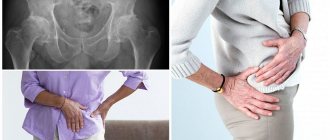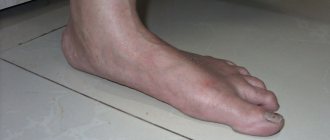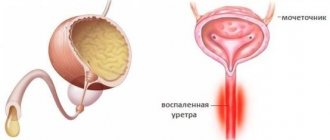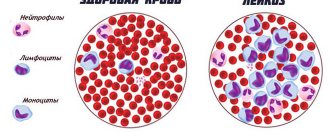Surgical intervention for polyps in the internal female genital organs is carried out strictly according to indications. In most cases, only a radical method can cure the disease and prevent complications. But if the girl does not consent to removal of the tumor or the formation is small and is not accompanied by painful symptoms, the polyp in the uterus is treated without surgery. For therapy, medications and compounds of alternative medicine, dietary supplements and homeopathy are used.
Causes
A uterine polyp is a benign formation that occurs in the organ cavity due to mucosal hyperplasia. Most often localized on the walls. They have a round shape and small size (from 10 mm). The appearance of polyps in the uterus is provoked by:
- Hormonal imbalance - excessive production of estrogen and insufficient progesterone.
- Chronic inflammation or infections.
- Endometrial diseases.
- Injury to the uterus during childbirth, during procedures.
- Genetic predisposition.
- The presence of systemic pathologies - diabetes, hypertension.
Polyps can appear in any woman, but girls who are overweight, have a weakened immune system, or have problems with the thyroid gland or liver are more at risk of developing it.
Table 1 - Warning signs of polyposis and consequences
| Manifestations | Complications |
|
|
What types of polyps can be treated conservatively?
If you start treating a tumor in the uterus or endometrium at an early stage, it is possible to eliminate the tumor. There are drugs and compounds of informal medicine, the use of which promotes the resorption of the polyp. Types of pathology that are amenable to conservative therapy:
- Glandular. Consists of stroma and glands. Steroids are used for treatment. If ineffective, surgery is prescribed.
- Glandular-fibrous. This polyp is able to respond to hormonal changes. For its treatment, gestagens and compositions from medicinal plants are indicated.
- Glandular-cystic. If the tumor is small, there is a chance to remove it through medications and alternative methods.
Conservative treatment is advisable for small polyps with slow growth. At the stage when signs of the disease appear, the woman’s condition worsens and the risk of complications increases, surgery is prescribed.
Drug treatment (without intervention) is rarely used for polyps that have arisen due to changes in hormonal levels. It is dangerous to treat most polyps with drugs alone or simply with herbal remedies. This applies to adenomatous polyps of the uterus, as they have a tendency to malignancy.
If the situation is not critical, the doctor may prescribe conservative therapy. But in this case, control over the dynamics of the process is required.
How realistic is it to cure without surgery?
The fight against polyps in the uterine cavity without the use of radical methods is not effective. Moreover, this is a complex process. But for some types of polyps, treatment with medications or herbal remedies is possible. The main thing is to carry out therapy after consultation with a doctor.
doctor explaining diagnosis to his female patient
Conservative methods will be effective and will help in eliminating the tumor if:
- the neoplasm is small;
- there is no chance of degeneration into cancer;
- there is no risk of anemia;
- a uterine polyp appeared against the background of an infectious process (antibiotics are used);
- the occurrence of a tumor is caused by an imbalance of hormones (gestagens are prescribed).
Home treatment rules
You can achieve the desired effect in the fight against uterine polyps using recipes from witch doctors and healers if you remember useful tips:
- Always be under the supervision of a doctor and consult with him;
- Healthy food;
- rest more;
- to refuse from bad habits;
- follow medical recommendations.
We recommend reading: How to treat an ovarian cyst at home
Those who have individual intolerance to the herbs used should completely abandon such therapy.
Drug treatment
Therapy of tumors in the uterus with drugs is used in gynecological practice. But it does not guarantee that the tumor will disappear and there will be no exacerbations. For small polyps, doctors use an integrated approach to therapy and prescribe gestagens, vitamins, anti-inflammatory drugs, and antibiotics.
Table 2 - Medicines for polyps on the walls of the uterus
| Group | Drugs | Effect |
| COCs (combined oral contraceptives) |
| Stabilizes hormonal levels |
| Gestagens |
| Increases progesterone levels and suppresses estrogen production |
| Antibiotics |
| For the treatment of pathologies caused by gonorrhea, mycoplasma Helps cure cervicitis, ureaplasmosis Destroy chlamydia |
| Anti-inflammatory medications |
| Eliminate inflammation and accompanying symptoms |
| Vitamins∕minerals |
| Increases the body's protective properties |
Often, for the treatment of polyps in the uterus, the use of vaginal suppositories - Indomethacin, Viferon - is prescribed. The drugs help eliminate the manifestations of the disease.
The course and regimen of medication is determined by the doctor, taking into account the patient’s well-being, her age and other individual characteristics of the body. You should not self-medicate, this is fraught with unpredictable consequences.
Borovaya uterus from polyps in the uterus
This medicinal plant has been used by women for several hundred years for infertility and many other pathologies of the female sphere. Borovaya uterus has proven itself well in the treatment of polyps, especially in combination with douching.
It should be taken in the form of an infusion for two weeks, half a glass between periods. To prepare the medicine, take 1 tbsp. l. dry plant, pour boiling water and leave for 30 minutes. After this, you need to strain the infusion and take it in two doses.
Also, for polyps, tincture of boron uterus, which is prepared using alcohol or vodka, helps well.
How to treat polyps in the uterus with wormwood?
Folk remedies
The intake of alternative medicine formulations should be agreed with the doctor. The greatest effect can be achieved by using drugs as an auxiliary method to drug therapy.
Treatment of polyps in the uterus without surgery is possible; you just need to know the properties of herbs and be able to use them. Recipes for popular remedies:
- Crushed celandine (1 cup) is brewed in two liters of boiling water. The container is wrapped and kept warm overnight. In the morning, the composition is filtered, poured into a container convenient for storage, and placed in the refrigerator. Used for a month and a half. During the first week, take ½ tsp, the second - 10 ml, the third - 15 ml, the fourth - 20 ml. Then the dose is reduced to 1 tsp. The infusion can be mixed with water before use. Celandine for polyps is also used for douching. For the procedure, take 500 ml of warm liquid.
- Dried boron uterus (20 g) is brewed in 200 ml of boiling water. The product is placed in a warm place for 3 hours. Drink ½ cup of filtered drug for the treatment of polyps twice a day.
- Chamomile is mixed in equal proportions with mint, St. John's wort, calendula, hops, shepherd's purse, and nettle. Raw materials, in the amount of 20 g, are poured with boiling water and left for 1 hour. Drink 100 ml of the drink every day before bed.
- Dry boron uterus (30 g) is poured with vodka (300 ml). The container is tightly closed and stored in a cool place for 30 days. Drink 10 ml of tincture three times a day. Before use, the medicine is diluted with water (20 ml).
- To treat polyps in the uterus, douching is recommended. Shack grass is mixed in equal proportions (20 g each) with calendula, oak bark, and yarrow. A mixture of plants (50 g) is boiled in a liter of water over low heat for a quarter of an hour. Then the product is infused and filtered. The procedure is carried out before bedtime.
- Thyme herb is combined in equal quantities (20 g each) with sage, lemon balm, chamomile, and oak bark. The raw material (50 g) is brewed in a liter of boiling water, simmered over low heat for 10 minutes, then infused. Douching is carried out twice a day. Treatment of a polyp on the uterine mucosa will be effective if you complete the full course - 3 weeks.
- For polyps, it is useful to use sea buckthorn oil. The easiest way is to buy it at the pharmacy, soak a tampon and insert it into the vagina. The procedure is carried out once a day for two weeks. You can prepare the product yourself. Juice is squeezed out of sea buckthorn fruits (1 kg), and then mixed with sunflower oil in a ratio of 1:1.5. The container is left in a dark place for a month. A tampon is moistened with the finished composition.
- The slightly sour milk is heated a little, and when it curdles, it is mixed with honey and crushed aloe leaves. The mass is wrapped in sterile gauze, a tampon is formed and inserted into the vagina overnight.
- Egg yolks (7 pieces) are combined with pumpkin seed powder (6 tbsp) and 500 ml of vegetable oil. The mass is kept in a water bath for a quarter of an hour. Take 10 g of the cooled mixture on an empty stomach. Treatment with this method is carried out according to the scheme: 5 days of admission and the same number of breaks.
Homeopathy and dietary supplements
There are many ways to treat a polyp without surgery. One of them is homeopathy therapy. This technique involves treating polyps with the same substances that led to their formation in the uterus. Although homeopathy still remains recognized as official medicine, scientists from the Russian Academy of Sciences (Russian Academy of Sciences) recognized it as a pseudoscience in 2021.
This is due to the ineffectiveness and inappropriateness of the use of funds. But despite this, the treatment method is still used. In case of illness, the use of Belladonna, Conium, Aurum is recommended.
Both homeopathy remedies and dietary supplements (biological supplements) must be taken in combination with the treatment prescribed by the doctor. Before using this or that composition, you must consult a doctor.
Reviews from women
There are many girls who managed to cure a uterine polyp with medications or folk remedies. Moreover, the majority decided on conservative therapy due to fear of surgical intervention. Some used herbal formulations during the period when the attending physician conducted a wait-and-see approach. As a result, during examination there was no polyp in the uterus. Those who were prescribed gestagens were also satisfied with the result. Taking the medications helped correct hormone levels and eliminate uterine polyposis.
Doctors' opinions on treating pathology with medications differ. Some believe that the disease cannot be eliminated without surgery. They believe that even if the tumor resolves, there will remain a high risk of recurrence. Others, on the contrary, do not prescribe radical treatment without using conservative treatment, since they believe that any intervention in the organs of the reproductive system is fraught with disruption of its functions.
Diagnosis of endometrial polyps of the uterus
Medicine offers several methods that help determine the formation of polyps in the uterus.
Gynecological examination
The doctor examines the vagina with both hands. Palpation determines the development of the genital organs, the size of the uterus and ovaries. Examines the ligamentous apparatus and the condition of the appendages, their mobility.
A gynecological examination allows you to determine the signs of hormonal pathologies against which polyps form.
Ultrasonography
Ultrasound shows the number and size of endometrial polyps. The problem is that ultrasound results do not always confirm the doctor’s diagnosis. There is a formation, but it could be a fibroid, a cancerous tumor or hyperplasia. Additional medical examination is recommended.
If they receive questionable results, doctors prescribe an ultrasound examination to their patients using saline solution, which is used to fill the uterine cavity. A diagnostic method called hydrosonography.
We recommend reading: Folk remedies for thrush: the basics of quick treatment at home
Hysteroscopy
When performing manipulations, doctors use a camera. The device is inserted into the uterine cavity for a detailed examination. Hysteroscopy allows specialists not only to detect polyps, but also other possible abnormalities.
The diagnostic method is unreliable; additional tests will be required. The doctor will not be able to visually determine the presence of a polyp or fibroid. Also confirm or deny the development of cancer cells.
Histological studies
During hysteroscopy, doctors remove a small fragment of a polyp from the uterus for analysis. Histological studies are necessary to determine the nature of the benign formation. Of all existing diagnostic methods, histological studies provide the most accurate information.
You may be interested in an article about the treatment of fibrocystic mastopathy.
There is also a useful article on the treatment of uterine prolapse with folk remedies.
Here you will learn how to improve your well-being during menopause.











